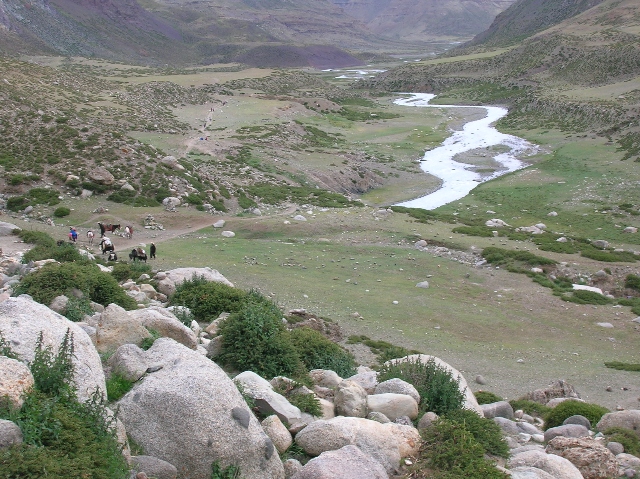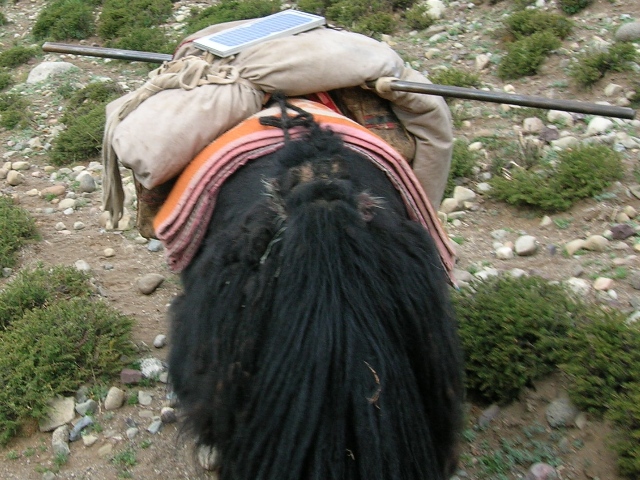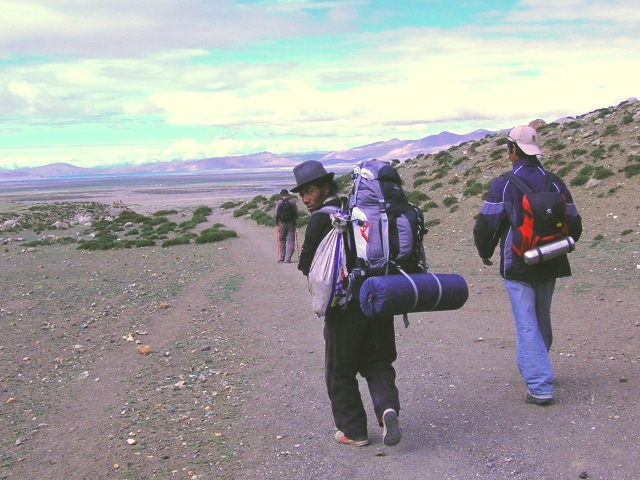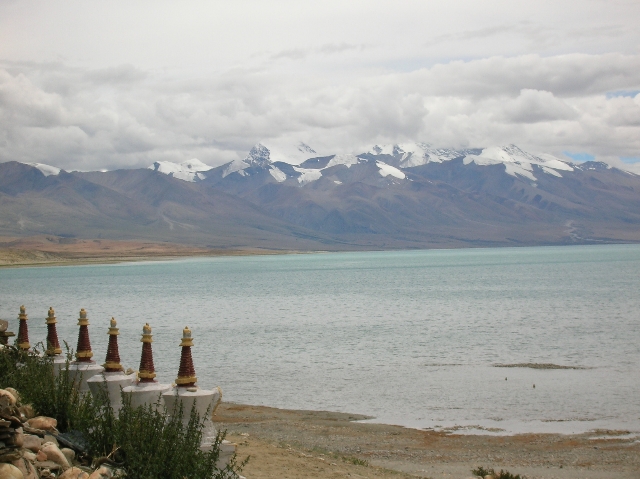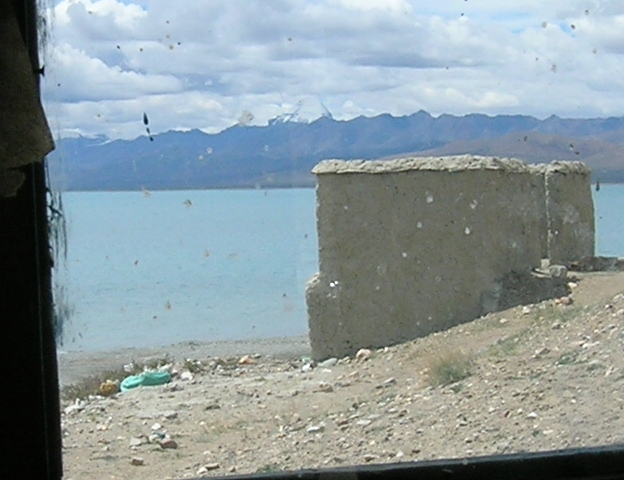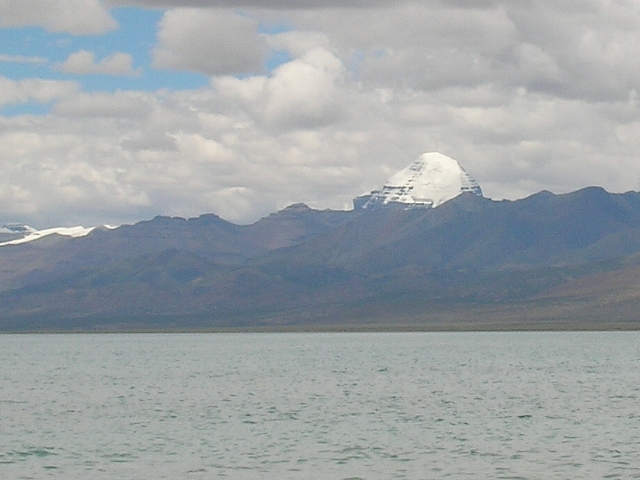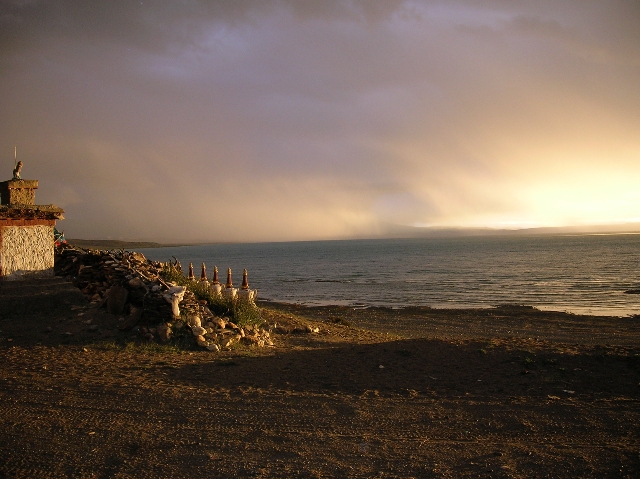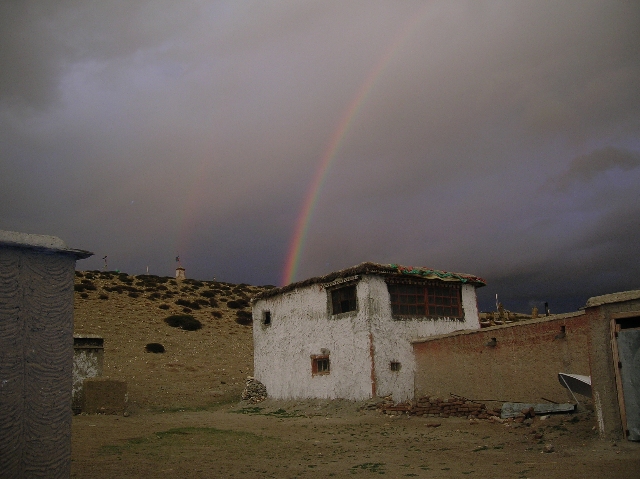| Prelude |
Day 18: MansarovarBefore starting our day's trek we find a monk to unlock the Milarepa meditation cave. It is only three feet high at its highest point. - about the same dimensions as the Dirapuk cave which was equally tiny. I can't say I personally had any deep spiritual experience there, but there is a very strong devotional atmosphere.Another Western couple visit the cave shrine at the same time we do. These are the first Westerners other than Roger that we have seen on Kailas. The walk out is pleasant, easy, and beautiful. We catch up to a group of young Indians and a really fun Dutch group with whom we enjoy chatting and who offer us some wonderful chocolate, plus of course more Tibetans, this time some nomads who are moving out and moving on. We also meet the first Chinese we have seen on Kailas, an intelligent and cosmopolitan family group who have studied abroad, have roots in Hong Kong and Singapore as well as on the mainland, and speak almost perfect English.
Given the explosion in Chinese internal tourism, the new train from Lhasa, and the renewed Chinese interest in Buddhism, the number of Chinese tourists making the pilgrimage can be expected to increase dramatically, which should make for some very interesting intercultural encounters.
We have an (early) lunch in our favorite restaurant and discuss our next moves. I want to visit Tirthapuri, a couple of hours away to the West (and thus out of our way). At Tirthapuri there is a sacred divination urn where you can check your karma level after the pilgrimage. You choose two stones from an urn containing equal numbers of white and black stones to find out if your karma is clear (2 white), mixed (1 white, 1 black) or in serious need of a tune-up (2 black). Dorje absolutely refuses to risk the trip. He says that the road is bad, our car is overloaded, and if an accident happened help would be a long time coming. Later events show us the wisdom of his decision. Thinking about it, I'm not sorry I didn't draw from the urn. What difference does it make what state my karma is in? All I can do anyway is clean it up, or keep it clean, from this moment on. We first head to Quhu monastery and hot springs at the North of Lake Mansarovar. The hot springs are closed, and also so unappetizing that we'd stay out of them even if open,. The monastery is a long way from the lake, and the vibes are not that great, so we head off again to Qugu monastery on the South shore.
The swan is one of the metaphors most used by Indian mystics. The swan lives beyond the Himalayas, in the Lake Mansarovar. The Lake Mansarovar is the purest lake in the world - very rarely does a human being reach there - uncontaminated, unpolluted, surrounded by the Himalayan beauty, virgin peaks. The swan is born there, lives there, but when it becomes too cold the swan has to come to this [Indian] side of the Himalayas, to the plains. And sometimes it happens: a swan forgets the way to go back. A swan simply forgets that he has a home somewhere, starts living by the side of dirty rivers, dirty ponds, muddy places. Hence, the swan becomes a tremendously potent metaphor for man. Man comes from God but he has forgotten from where he comes, who he is. Man comes from God, from the holiest of holies, and goes on living by the side of dirty rivers, muddy pools of water.Of course, he cannot be contented here, but he knows no other place to go. He is lost. This seems to be the only world. The Eastern mystics use the metaphor of the swan for man. Osho (Rajneesh), 'The Fish in the Sea is not Thirsty' The weather is sunny though a little cool: I take off my clothes and swim in the lake. This is the highest fresh-water lake in the world (2,000 feet higher than the next contender, Lake Titicaca in the Andes), and it is covered in thick ice most of the year, yet what strikes me most is how normal everything feels. The water is cool yet pleasant on the surface and a little colder underneath. The experience reminds me of swimming in a Cascade mountain lake in summer near my home in the U.S. Pacific Northwest. I take two separate dips and make sure to dive fully under the water in the hope of washing away all my sins.
|
